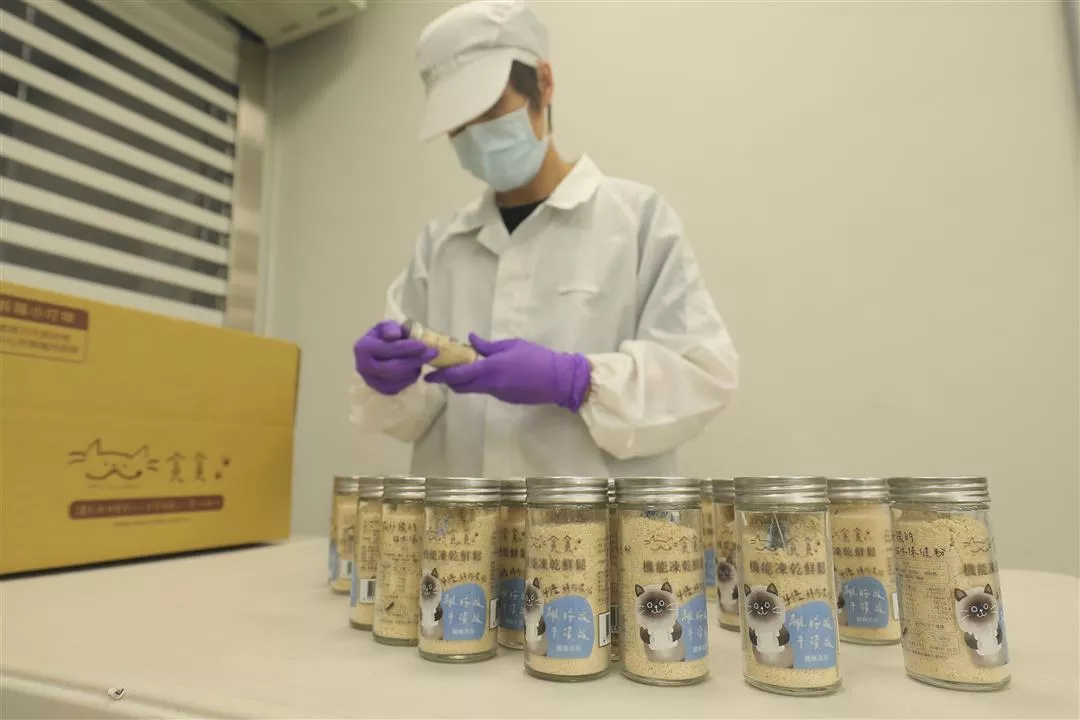Sustainable tastiness
Because the silkworms can only eat organic mulberry leaves, their pupae are an excellent source of animal protein for sustainable circular agriculture. Therefore in 2018 the MDARES, in coordination with the Council of Agriculture’s Program for Animal Health Technology, began investigating the feasibility of using silkworm pupae as an additive in pet foods and animal feeds. They completed their research and transferred the technology to the private sector in 2021.
Eva Liu, a manager at Furtime Pet Food Company, which is the recipient of the technology transfer, says that when they first put out canned cat food made with silkworm pupae, pet owners worried that they would see insect corpses in the cans. However, she explains that the appearance of this kind of cat chow is no different from ordinary cat food. When Furtime began raising capital, they reached 630% of their initial target, and in the year since the product has been on the market sales have tripled.
Silkworm pupae are mainly used as a health ingredient in canned cat food. In order to make this ingredient more acceptable to notoriously finicky cats, R&D staff have had to put a lot of effort into devising the right recipes. For example, they have added in essence of chicken and essence of milkfish to make the food more fragrant so that cats, who are heavily scent-oriented, will find it appetizing.
Furtime researcher Eric Peng says that in the UK people are already using protein from insects like the black soldier fly to make dry cat and dog foods, but he believes Taiwan is the first place in the world where canned cat food is made using silkworm pupae. He expects healthy functional pet foods such as those that include probiotics or silkworm pupae to become increasingly popular with cat lovers.
Mung bean hulls, soybean residue, and coffee grounds have all been seen as agricultural “waste” products. But thanks to technology, they can be transformed into functional animal feeds, and can even be turned into new plant-based antiviral medicines.

Freeze-drying technology can be used to turn ingredients including silkworm pupae and fish into the dry condiment furikake.

Functional food made with silkworm pupae is suitable for cats, who are not big eaters.(photo by Kent Chuang)